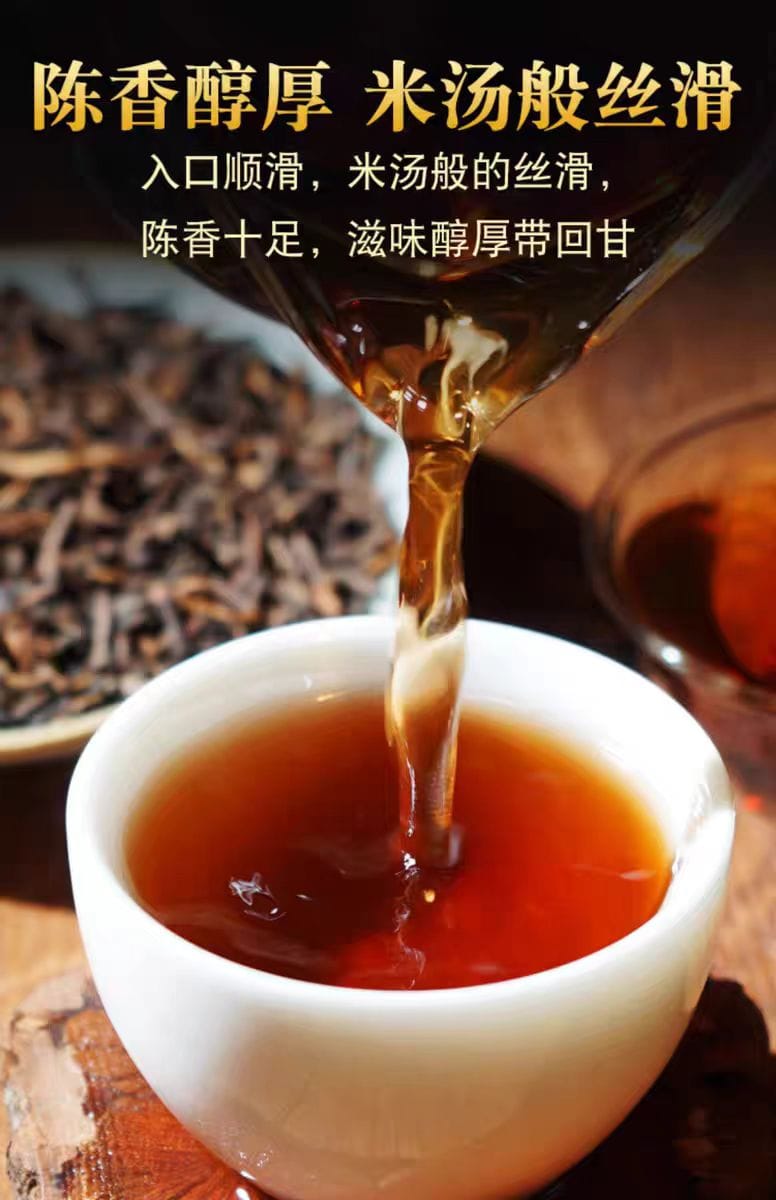1. Appearance: The strips are tightly rolled and the color is vividThe dry tea of high-quality Pu ‘er tea is tightly rolled and uniform. The raw tea is bluish-brown or dark green, while the ripe tea is reddish-brown and lustrous. If a large number of tea leaves are found to be broken, dark in color or black, it may be due to processing defects or improper storage. For instance, the ancient tree tea from Menghai tea-growing area has thick and strong strips like tendons and bones, while the tea from the terrace is fine and thin.Practical skill: Shine the flashlight on the tea cake with your mobile phone and observe whether the reflection is uniform. Tea leaves that are lustrous and oily often have better aging potential.

2. Aroma: Pure and long-lasting, free of any off-flavorsThe aroma of Pu ‘er tea is divided into three stages: hot smell, warm smell and cold smell. When smelled hot, raw tea should have floral, fruity or honey-like scents, while ripe tea should have aged or woody aromas. Even after a cold sniff, the aroma of high-quality tea can still linger for a long time. If you smell musty, sour or rusty odors, it might be due to moisture from storage or artificial aging.Case: A tea merchant disclosed that some merchants would add flavoring to crushed tea to mask the unpleasant smell. Novices can gently smell the tea from a distance of 10cm to avoid directly inhaling the dust.3. Soup color: Clear and bright, with a deep red color like wineAfter brewing, the color of the raw tea soup should be golden and transparent (for new tea) or orange-red and bright (for aged tea), while for ripe tea, it should be red, rich and transparent like red wine. If the soup color is turbid and black, it may be due to excessive fermentation or too many impurities.Visual contrast: When tea is served in a white porcelain cup, high-quality tea will have a “golden ring” (theaflavins adhering to it) remaining on the cup wall, while the bottom of low-quality tea often has sediment.

AYM Pu’er
Black Tea Puerh Tea is harvested directly from the source, supplied directly from the tea plant to Europe, simple, easy to store and easier to brew.Coffee lovers will love YM’s tea!
4. Taste: Rich and sweet aftertaste, with bitterness vanishing quicklyHigh-quality Pu ‘er tea is as smooth as silk when entering the mouth. The bitter and astringent taste quickly turns into sweetness, and the saliva production lasts for a long time. If the tea soup is bitter and astringent, it may be due to poor quality raw materials or improper blending.Tasting suggestion: After swallowing in large mouthfuls, close your mouth and exhale through your nasal cavity to feel if your throat is dry. The aftertaste of good tea flows like a clear spring, while inferior tea gives a “throat-locking” sensation.5. Leaf base: Soft and elastic, with uniform colorThe leaf base after brewing is the “ID card” of the tea. High-quality raw tea leaves are yellowish-green and fresh at the bottom, while ripe tea is reddish-brown and lustrous, with leaves as soft as silk. If the leaf base turns black, has mixed flowers or is hard and brittle, it may indicate failed fermentation or a disordered blend.

Origin Tea
Directly from the tea plantation to your home, the preferred tea supplier for tea in Europe.





